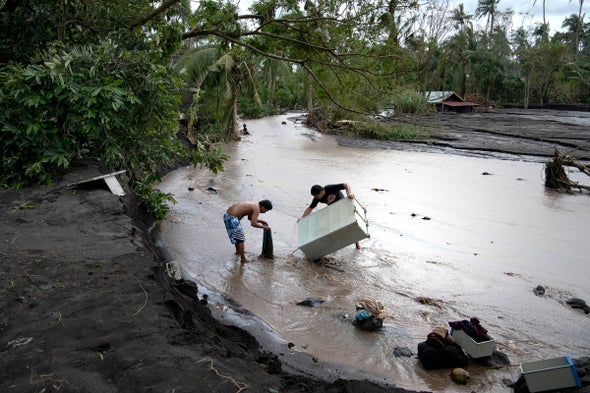
Extreme weather and climate-linked disasters have killed 410,000 people since 2010, according to the International Federation of Red Cross and Red Crescent Societies.
The group’s “World Disasters Report 2020” released yesterday says more frequent and severe catastrophes threaten to exacerbate humanitarian crisis and lead to economic hardship even as global death counts drop because of steps to improve resilience.
The relief organization warns that major disasters are increasingly happening in succession, such as the half-dozen typhoons and tropical storms that have hit Southeast Asia since early October.
By combing through data on thousands of disasters the federation has responded to in the past decade, IFRC says that 83% of them were climate-related in some way, usually severe flooding, violent storms and deadly heat waves.
“The number of such disasters triggered by extreme weather- and climate-related events has been increasing since the 1960s, and has risen almost 35% since the 1990s,” the new report says.
“These extreme weather- and climate-related disasters have killed more than 410,000 people in the past ten years, the vast majority in low and lower-middle income countries,” IFRC says. “Heatwaves, then storms, have been the biggest killers.”
The group said 308 major natural disasters occurred in 2019. Of these, 237 could be tied to weather and climate in some way. The most frequent were major floods, with 127 occurring last year. Following floods were severe storms, disease and earthquakes.
IFRC representative Alison Freebairn said that not every event the group counted can be conclusively linked to human-caused global warming. But she noted that researchers and the Intergovernmental Panel on Climate Change (IPCC) have uncovered strong evidence that greenhouse gases have made these weather-related disasters more likely to occur and more devastating when they do.
She pointed to recent findings that argue climate change made the devastating 2019-2020 bush fire season in Australia 30% more probable.
“What we know in terms of the impacts of climate change is from the IPCC reports, which give high, medium or low confidence that certain events were made more likely due to climate change. And then we also know climate change makes extreme climate and weather events more frequent and intense and more variable,” Freebairn explained.
“The statistics show we have had exactly that; more frequent and intense extreme climate and weather-related disasters in both real numbers and as a percentage of all disasters,” she added.
Ilan Noy, an economist at Victoria University of Wellington in New Zealand, specializes in researching the economic costs of climate change-related disasters. He said organizations like IFRC and insurance companies are increasingly able to link natural disasters to climate change given the advancements in attribution science.
“While previously it was hypothesized that they are connected to climate change we didn’t really have solid scientific evidence to prove it,” Noy said. “Now I think in the last five years the climate science has progressed and actually they have much stronger statements, or producing much stronger scientific statements about the connections between weather events and climate change.”
Noy’s research argues that global warming is making previously rare natural disasters more probable and frequent. But he cautions that while such estimates can be made for major disasters in specific countries or regions, it’s difficult to do that for the world as a whole.
“For that, you need to quantify the changing probability of all these extreme events that are happening globally, and the science is not there yet,” he said.
The IFRC report expresses concern about “concurrent and consecutive disasters” that leave affected populations “with little time to recover before the next shock arrives.”
For example, the United Nations is still scrambling to deliver emergency aid to 675,000 people in Cambodia, Laos, the Philippines and Vietnam in the wake of Typhoon Goni and Typhoon Vamco. The storms followed nearly identical tracks within two weeks of each other this month, with Vamco striking northern Vietnam on Sunday and Monday. The U.N. said Typhoon Goni was “the world’s most powerful tropical cyclone this year thus far.”
Freebairn of IFRC said there is a bright spot in the grim data.
“The great news is that deaths are going down even as the number and severity of events has increased and the population has increased,” she said. “And this is a great sign that we hope means that efforts at disaster risk reduction and climate adaptation are working.”
But IFRC argues that governments need to do far more on climate mitigation and adaptation, endorsing the United Nations’ call for COVID-19 pandemic recovery funds to be aimed at reducing emissions and building resilience.
The report recommends designing all new infrastructure to “withstand projected climate and weather extremes and rising sea levels.”